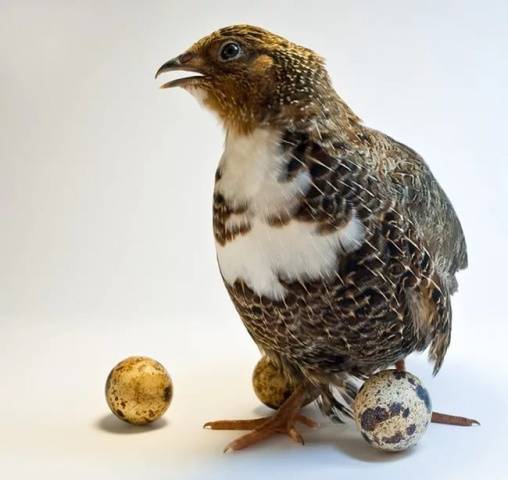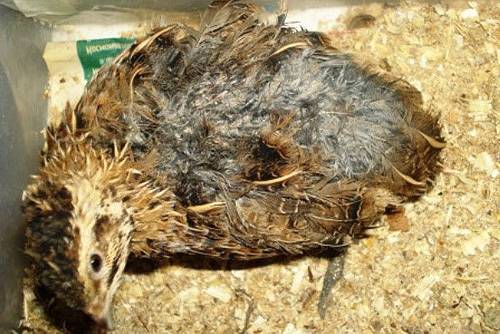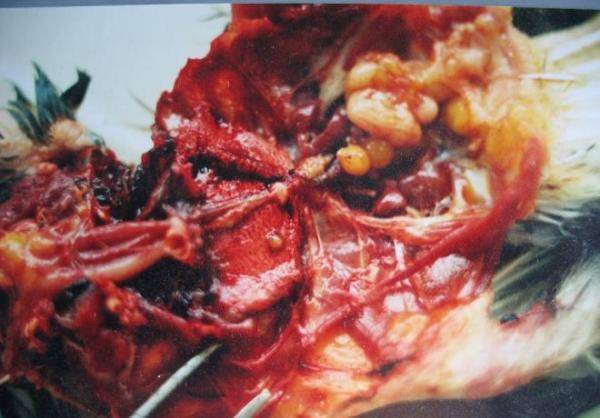Content
Quails are among the most unpretentious and undemanding birds to care for. They are naturally endowed with fairly strong immunity and can tolerate minor mistakes in care. But even such persistent birds can get sick. Most often, quail diseases are associated with a systematic violation of the conditions of care, various injuries and infectious diseases. Conventionally, all diseases of these birds can be divided into infectious and non-infectious. Below we will look at common quail diseases and their treatment.
Non-communicable diseases
Non-infectious diseases of quails are the result of their improper maintenance, violation of the feeding regime, as well as the result of injuries. Each of these reasons entails certain health problems for these birds, which we will discuss below.
Containment breach
Before you grow quails, you need to take care of their future home. It should be free of drafts and dry, musty air. Signals that the conditions are not suitable for the birds will be single bald patches and focal loss of feathers from the head or back. If the birds are for a long time in unsuitable conditions for them, then all their plumage will become brittle. Eliminating drafts and creating optimal air humidity for quails will help to correct the situation.
In addition to problems with the poultry house, their number also affects the health of birds. If the house is small, and there are many birds in it, then they can begin to peck at each other. This, in turn, leads to various injuries and deaths.
Violation of the feeding regime
The main cause of non-communicable diseases is poor or unhealthy quail nutrition. As a result of the lack of useful vitamins, these birds develop persistent vitamin deficiencies. The following symptoms are an indicator of a lack of nutrients:
- loss of appetite;
- throwing back the head;
- stretching the neck;
- lowering of the wings;
- ruffled feathers.
The occurrence of any of these symptoms indicates a lack of nutrients in the quail's diet. Its treatment can be handled independently, without the involvement of a veterinarian. To do this, you just need to make up a balanced feed for the quails. You can learn how to do this correctly from the video:
Quails are oviparous birds, therefore, when planning their nutrition, special attention should be paid to D vitamins, calcium and minerals. If the birds do not have enough of these substances, then the shell of their eggs will become soft and brittle, or even completely absent. To cope with this problem will help the addition of crushed eggshells, chalk or shells to the quail feed.
This happens when juveniles are fed with adult food. Such food provokes early egg-laying in them, which can result in the loss of an egg with the oviduct. To prevent this from happening, birds of different ages need to be provided with different nutrition, which will take into account their age needs.
Trauma
Quail injuries are not uncommon. They can occur as a result of fright, extreme stress, or pecking of birds among themselves. If the bird is injured, first aid should be given.If this is a shallow wound, then it should be treated with iodine, a solution of potassium permanganate or furatsilin and well bandaged. If the bones or limbs are broken, it is better to show the bird to the veterinarian.
Contagious diseases
Various infections are the source of infectious diseases in quail. The main danger of such diseases lies in their speed of spread. One sick bird is enough to significantly reduce the number of quails.
Preventing infectious diseases is much easier than treating them. As a preventive measure for such diseases, containers with soda or chlorine can be installed in the poultry house. The use of ultraviolet lamps shows good results in the prevention of diseases.
Therefore, when breeding quails, care must be taken to ensure that there is no contact between them.
Below we will consider the most common quail infectious diseases.
Newcastle disease
Many quail breeds have an innate immunity to this disease, but this does not prevent them from being its carriers. Individuals of other breeds, when infected, die within 2-3 hours.
Sick birds move little, sit, covering their heads with a wing. From the outside, they look drowsy, lethargic and lost. Their breathing becomes heavy, and coughing fits are also noted.
During the period of exacerbation of the disease, birds rise sharply and begin to walk in circles. Seizures and bouts of increased excitability are possible.
The carriers of this disease are rats, cats and various poultry. Sick birds must be killed and the carcasses burned. It is strictly forbidden to use carcasses or eggs of birds infected with Newcastle disease.
Pullorosis
Pullorosis usually affects young quails. With this disease, the droppings clog the anus of birds, without going outside. Sick quail chicks huddle in a corner, tremble and squeak. They become drowsy, often fall, and their physical activity is sharply reduced.
The causes of pullorosis in quails are:
- hypothermia of chicks;
- bad food;
- lack of drinking water.
Pullorosis is not cured. Individuals affected by the disease should be burned to prevent other chicks from becoming infected.
Aspergillosis
A very common disease not only among quails, but also among other poultry. Adults are asymptomatic with aspergillosis. Sick chicks are weak, their legs and beak turn blue, and breathing becomes heavy. In this disease, there is also a great thirst.
It is possible to diagnose this disease only after a postmortem examination of the insides of a quail. A fungus will be visible on the insides of a sick bird. You should not eat the carcass of a sick quail.
Colibacillosis
This quail intestinal disease is similar in symptoms to pullorosis. The quails will also be lethargic and shaky. But unlike pullorosis, which is of a single nature, this disease can develop to epidemic proportions.
Individuals sick with this disease are subject to necrosis. Their carcasses and eggs should be burned.
After that, they should be vaccinated. Complete disinfection of the house is also mandatory.
Avian cholera
This disease is also known as pasteurellosis. The infection affects the quail's liver, causing metabolic dysfunction and liquid blood feces.
Avian cholera does not respond to treatment, therefore it always ends with the death of the diseased individual.To prevent the spread of the disease, the carcass is burned, and the poultry house and cages are completely disinfected.
Conclusion
Regardless of whether the bird disease is infectious or the health problems of the quail are due to poor housing conditions, the fault lies with humans. It is the breeder who is responsible for his birds. Therefore, before deciding to breed quails, you need to sensibly assess your chances of creating comfortable conditions for them.















